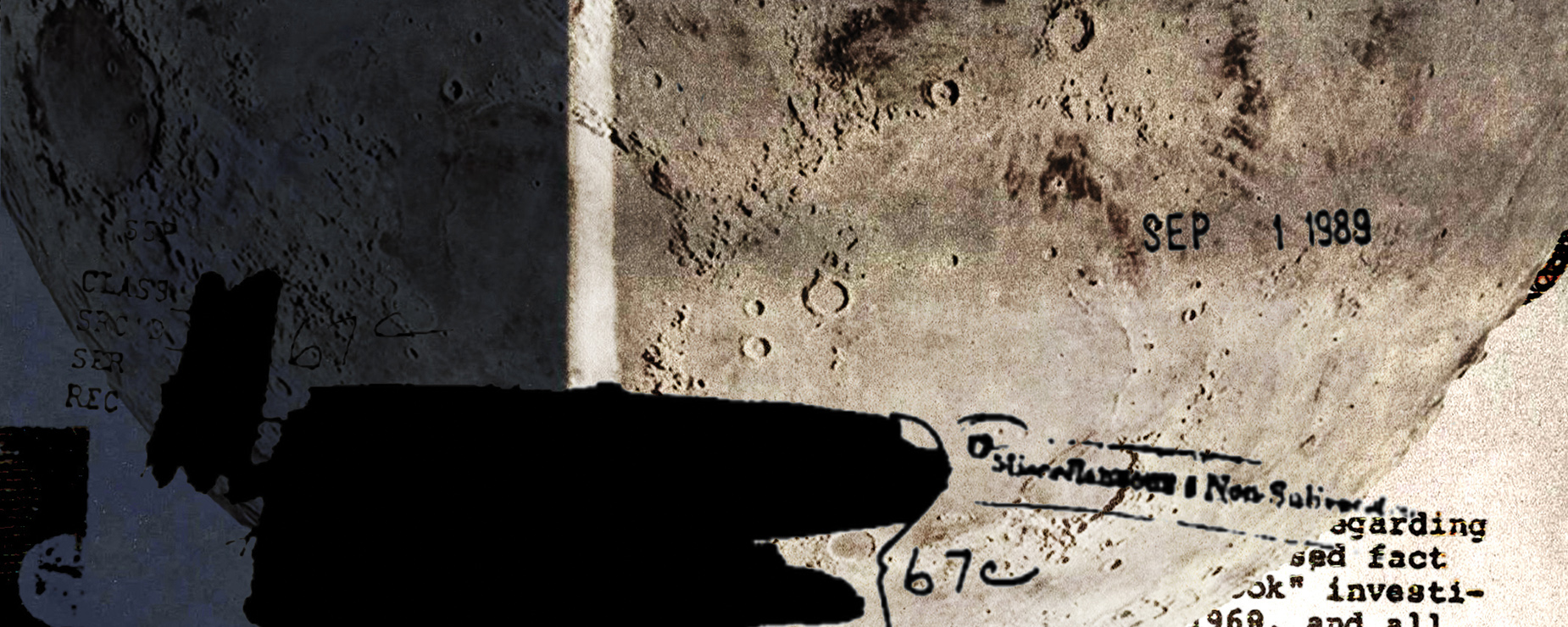

There have been two dominant narratives about the rise of misinformation and conspiracy theories in American public life.
What we can, without prejudice, call the establishment narrative — put forward by dominant foundations, government agencies, NGOs, the mainstream press, the RAND corporation — holds that the misinformation age was launched by the Internet boom, the loss of media gatekeepers, new alternative sources of sensational information that cater to niche audiences, and social media. According to this story, the Internet in general and social media in particular reward telling audiences what they want to hear and undermining faith in existing institutions. A range of nefarious actors, from unscrupulous partisan media to foreign intelligence agencies, all benefit from algorithms that are designed to boost engagement, which winds up catering misinformation to specific audience demands. Traditional journalism, bound by ethics, has not been able to keep up.
The alternative narrative — put forward by Fox News, the populist fringes of the Left and the Right, Substackers of all sorts — holds almost the inverse. For decades, mainstream political discourse in America has been controlled by the chummy relationship between media, political, and economic elites. These actors, caught up in trading information, access, and influence with each other, fed the American people a thoroughly sanitized and limited picture of the world. But now, their dominance is being broken by the Internet, and all of the dirty laundry is being aired. In this view, “misinformation” and “conspiracy theory” are simply the establishment’s slanders for inconvenient truths it can no longer suppress. Whether it’s the Biden administration establishing a Disinformation Governance Board within the Department of Homeland Security or the New York Times’s Kevin Roose calling for a federal “reality czar,” the establishment is desperate to put the Humpty Dumpty of controlled consensus reality back together again.
As opposed as they seem, in fact both of these narratives are right, so far as they go. But neither of them captures the underlying truth. There is indeed a dark matter ripping the country apart, shredding our shared sense of reality and faith in our democratic government. But this dark matter is not misinformation, it isn’t conspiracy theories, and it isn’t the establishment, exactly. It is secrecy.
In discussions of online misinformation, one inevitably comes across some version of a ubiquitous quote by the late Senator Daniel Patrick Moynihan: “Everyone is entitled to his own opinion, but not to his own facts.” This is often mustered at the climax of some defense of “journalism” or “science” against “fake news.” But the bon mot is always tossed out without any interest in Moynihan himself. Defenders of the social importance, and the ongoing possibility, of a fact-based democratic culture would do well to consider how the quote holds up against one of the major preoccupations of this great legislator and intellectual.
The Moynihan quote captures an important dichotomy between facts and opinions, one that has been blurred by the rise of alternative media, the explosion of “news-commentary” in newspapers and on television, and an influencer-centric media economy. But at the same time, hanging like the sword of Damocles over our shared sense of reality, is an invisible and unspoken third category, one on which Moynihan became increasingly fixated.
Born in 1927, Moynihan had government roles for most of his career, serving in the Navy, on the staff of New York Governor Averell Harriman, in the administrations of John F. Kennedy and Richard Nixon, as U.S. ambassador to the United Nations and then to India, and finally a quarter-century as a U.S. Senator from New York. Late in his political career, in the 1990s, Moynihan became deeply concerned about government secrecy. Beyond particular worries about the legal and practical consequences of an explosion of classified documents, Moynihan believed that expansive secrecy was deleterious to our form of government. The 1997 Moynihan Secrecy Commission Report warned:
The failure to ensure timely access to government information, subject to carefully delineated exceptions, risks leaving the public uninformed of decisions of great consequence. As a result, there may be a heightened degree of cynicism and distrust of government, including in contexts far removed from the area in which the secrecy was maintained.
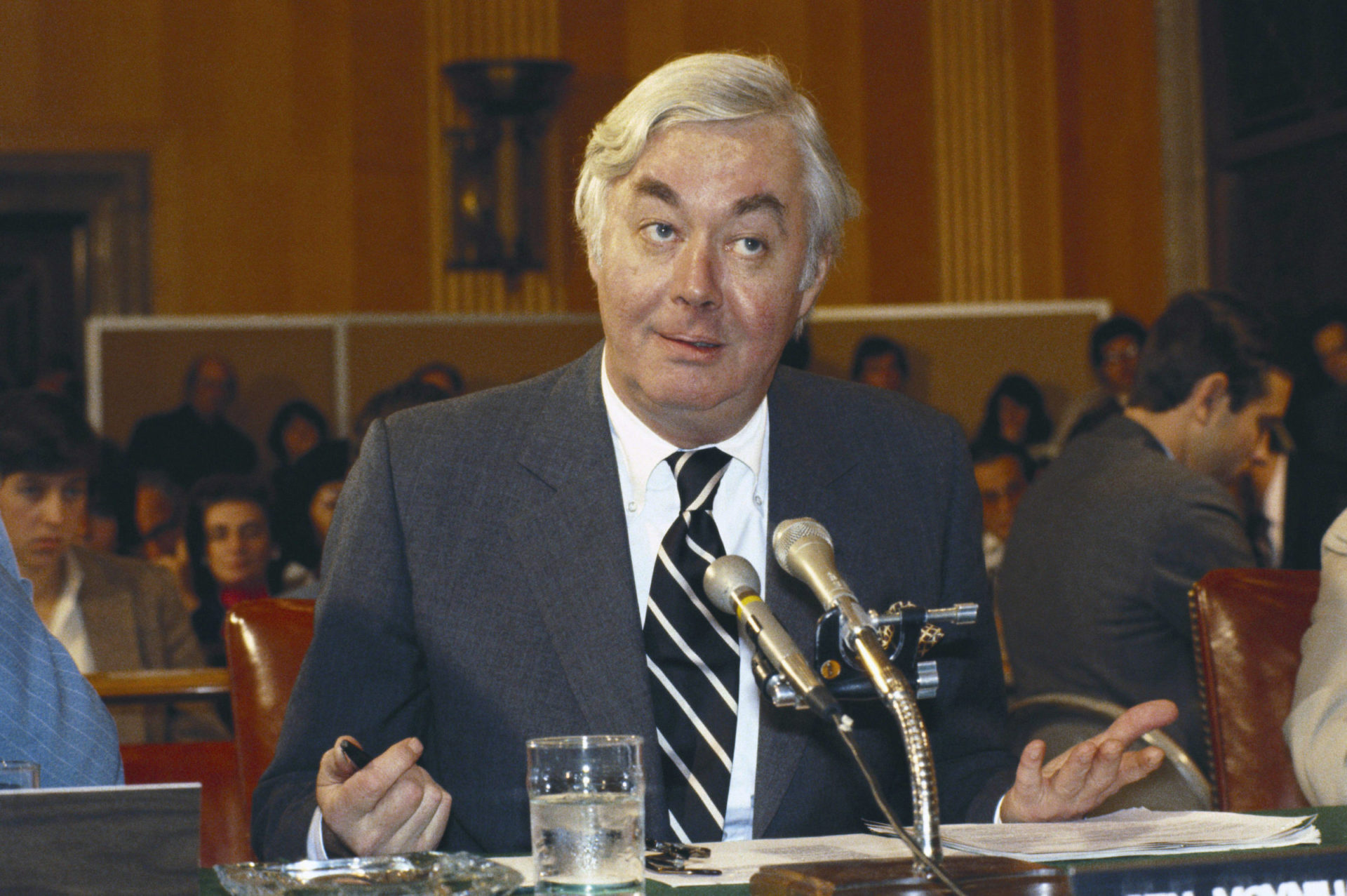
Writing before 9/11, Moynihan was especially worried that the rise of terrorism would feed the secrecy system that had grown like a cancer during the Cold War. “Secrecy responds first of all to the fear of conspiracy…. The United States will be best served by the largest possible degree of openness as to the nature of the threats we face. To do otherwise is to invite preoccupation with passing conspiracy.”
To see how secrecy upends the distinction between fact and opinion, consider the open letter that fifty-one mostly-former senior intelligence officials signed two weeks before the 2020 presidential election. The letter stipulated that the New York Post’s reporting on damaging information from Hunter Biden’s laptop bore “all the classic earmarks of a Russian information operation.” Where did this letter fall on the opinion–fact spectrum? The signers explicitly disclaimed that they had any novel facts to offer. At the same time, they implied that their authority on this matter stretched beyond mere opinion, even experienced and informed opinion. The trust that media organizations and social media platforms put in this letter — now known to have been organized by President Biden’s campaign behind the scenes — owed much to the expectation that people who signed the letter did so on the basis of an in-depth understanding of Russia’s information operations, which they could not fully share because it was secret.
Facts are statements that we accept as true because they are established by public processes that can be checked — think of the methods of science or traditional journalism. But then the opposite of a fact is not an opinion but a secret: a statement about reality that cannot, and in some cases must not, be verifiable through a public process. We can know a secret only if we’ve been initiated into an intentionally hidden social world. And if a secret’s hidden world remains inaccessible, then whether one accepts a secret as truthful depends entirely on the legitimacy of the secret-tellers, on how much we trust them.
But little can be kept secret forever. And when secrets become public, they burst into the visible realm of facts, in a display that can be profoundly unsettling.
This essay series has been arguing that one reason the American psyche is no longer in the grip of a single consensus narrative is that no single story can contain the massive number of facts that are generated and shared by automatic digital systems today. In this deluge, secrets have a special place. Trust in institutions can be drowned when corruption, incompetence, and malfeasance that were once hidden out of view inevitably become known. The most direct cause of the massive growth in American conspiracy thinking is the massive growth of bureaucratic secrecy since the start of the Cold War, together with the increasing impossibility of keeping secrets in a digital age.
It is hard to remember how submerged from public view the national security state was before 9/11. The intelligence community that came into being after World War II worked hard throughout the Cold War to make it that way. The CIA fought to stay out of the headlines (though not always successfully), and the missions of numerous national security organizations, sometimes even their very existence, were classified. The system of classifying documents as “top secret,” “secret,” or “confidential” was a midcentury innovation in American political life, and the population of people with security clearance hadn’t yet mushroomed to the late–Cold War size of over four million. Leaks were relatively rare, and often dealt with political and diplomatic matters rather than secret intelligence or military action, though there were notable exceptions. The New York Times’s lawyers cautioned it against publishing the Pentagon Papers in 1971 for good reason: President Nixon’s Department of Justice threatened a criminal prosecution under the Espionage Act.
Americans have always been paranoid, as Jesse Walker demonstrates in The United States of Paranoia — about the papal octopus, puppeteering Freemasons, mesmerized Mormons, infiltrating anarchists, clandestine Bolsheviks, brainwashed POWs, homegrown Muslim terrorists, and more. But this “paranoid style” — not limited to Left and Right fringes, as Richard Hofstadter suggested, but universal in American culture — was the product of the social realities of American political life, of messy pluralism meeting an open society.
At their best, America’s free institutions act as a counterweight to this paranoid tendency in American life. From the founding of the republic, most American leaders had seen secrecy as antithetical to the spirit of liberty, commerce, and debate that suffused our political institutions. Espionage occurred primarily through ad hoc and personal networks, and there were no secret institutions outside of wartime exigencies, after which they were promptly closed down.
In the new book The Declassification Engine, a thoroughly alarming history of American secrecy, the historian Matthew Connelly demonstrates how geopolitical circumstances together with technological developments overthrew these democratic ideals. Two technologies in particular — nuclear weapons and electromechanical cryptography — demanded permanent systems of informational control if the United States was not simply going to give them up (an absurd suggestion). More so even than the CIA’s covert action programs, it was these technologies and the bureaucracies that sprung up around them that formed the kernel of the secrecy state.
As the national security state grew, so did the number of activities that fell under the umbrella of secrecy. Expanding from “born secret” nuclear information and cryptography, the classification system grew to include aerial surveillance and then satellite photography, signals interception stations, covert operations, propaganda and political meddling, weapons programs, sensitive scientific information, and military special operations, not to mention analysis and senior discussions of foreign affairs. And, of course, there were secrets about secrets — background investigations, counterintelligence probes, encryption protocols, and black budgets. Meanwhile, concerns about foreign infiltration justified surveillance and infiltration of domestic political groups, especially in the New Left and civil rights movement, by not just the FBI but also defense intelligence and even the CIA (in violation of its charter). In many cases, even the existence of whole organizations was classified, as with the National Security Agency and the National Reconnaissance Office.

All of this sprang up from essentially nothing prior to the Second World War to constitute a vast and growing secret world by the first decade of the Cold War. There were not enough secure offices for those working in it and not enough filing cabinets to contain all the new secrets, even as hundreds of tons of classified documents were securely destroyed each year. All of this was hidden from the public eye like water behind a dam.
But the Watergate scandal, among other revelations of the early 1970s, finally broke the dam of secrecy and caused Congress to re-assert itself in an oversight role. In 1975, the Senate established the Church Committee to investigate secret abuses by the CIA, the NSA, and the FBI. The dirty laundry of the early Cold War began to come to light, and revelations emerged: of the CIA drugging American civilians (MK Ultra), withholding critical information from the Warren Commission investigating the JFK assassination, and plotting assassinations (Family Jewels); of the FBI harassing and spying on American activists (COINTELPRO); of the NSA wiretapping American citizens; of the military secretly and illegally bombing Cambodia; and similar abuses. Congress created new permanent select committees to actively oversee intelligence programs (inadvertently widening the circle of political actors with access) and passed an expanded Freedom of Information Act in 1974 over President Ford’s veto, all in the hopes of making the secret world of intelligence more democratically accountable.
In some ways, the Freedom of Information Act backfired. By creating a proactive public right to almost any kind of unclassified information, FOIA meant that the only way to conceal politically or bureaucratically sensitive information was to classify it. An estimated 50 million documents are classified each year. Moreover, as intelligence agencies have adopted the same kinds of digital systems everyone else has, the number of classified digital documents has exploded. Barack Obama’s presidential library alone contains an estimated 250 terabytes of digital data, three times the amount of George W. Bush’s — including an enormous number of classified documents that will require official review. The Public Interest Declassification Board, established by Congress to assure public access to unclassified information, worries that the current procedures will not be able to manage the deluge in the years to come.
For documents that did not meet classification criteria, federal bureaucracies decades ago invented the designation “For Official Use Only,” seeking to restrict public access to certain unclassified documents. To rein in this practice, the Obama administration came up with a more stringent “Controlled Unclassified Information” category. It took the Defense Department over a decade formally to comply, though in practice it never has, as the new label is little more than a replacement of the old one.
In the 1990s, the rise of Mandatory Declassification Review — a process by which one may request that any document be reviewed for possible declassification — along with the end of the Cold War, brought American national security institutions out of the shadows. Public pressure had been building for two decades. The earth-shattering revelations of failures and abuses beginning in the 1970s were followed by the declassification of closely guarded secrets. The late Carter administration first acknowledged the existence of stealth aircraft and spy satellites and oversaw the creation of secretive new military special operations units, which became increasingly prominent throughout the 1980s. And though the history of World War II code-breaking was revealed in a 1974 military memoir, F. W. Winterbotham’s The Ultra Secret, many of the details remained obscurely referenced in histories of computing and intelligence until the 1990s, amid growing public interest in the war’s history. In 1995, the CIA for the first time declassified pictures from the Corona satellite program used to spy on the Soviet Union, the same year that the NSA declassified the Venona program of top-secret cracked Soviet cables about Communist spies in the United States. Midcentury intelligence programs that were still nearly invisible in 1970 appeared, by the end of the century, to be massive in scope and historical influence.
The reorganization of the American national security state for the post–Cold War world began well before 9/11. The military and intelligence communities spun up new counterterrorism and special operations programs in the late Cold War as a response to the threat of terrorism, the proliferation of weapons of mass destruction, and the increasing willingness of state actors to use terrorist proxies rather than confront American power directly. Even as the demise of the USSR reduced the demand for traditional state-on-state espionage, it created a world of civil wars, powerful organized crime, rogue states, and other non-traditional threats. Unlike the “spy vs. spy” Cold War, in the era of growing terrorism it was difficult to understand or prioritize all the possible threats, and both liberal and neo-conservative American defense intellectuals began to consider what significantly expanding American presence abroad would look like. In 2000, CIA Predator drones, which had initially been used in the Balkans, began routinely overflying Afghanistan to keep tabs on the shadowy jihadist group Al Qaeda. Eventually, President Bush’s national security deputies met to finalize a “broad covert action program” that would have included the first-ever use of an armed drone for an assassination. That meeting took place on September 10, 2001, and the target of the planned assassination was Osama bin Laden.
September 11 unleashed a tidal wave of war spending. The last two decades of America’s War on Terror cost $8 trillion, including over a trillion on Homeland Security counterterrorism spending alone. Theories about global financial flows, narcoterrorism, and immigration meant that almost every element of federal law enforcement and intelligence grew larger and more secretive in the wake of 9/11. The number of Americans with security clearances ballooned from two million in early 2001 to almost five million within a decade, and the massive amounts and disparate kinds of data authorized for collection demanded new investments in automation, machine learning, and cloud computing.
As a drip-drip-drip of shocking revelations on a decades-long time lag inflict a Chinese water torture on our political psyche, we have witnessed a slow but steady rise in paranoia and conspiracy thinking in American public life. All of this is the predictable outcome of a national security state of immense scale operating amid a political system like ours, which leads to a clash between two essential principles — bureaucratic self-protection and democratic openness.
Senator Moynihan was clear-eyed that in a hypertrophied secrecy state, leaking would be a routine part of the system, the result of internal struggle among government actors whose aims would inevitably come into conflict. And yet even though we should expect it, it still undermines public trust:
The leaking of secrets has important consequences for the quality of information made available to the public, as well as for the ability to verify the information. Leaking creates a double standard that may, at times, pit political and career government officials against one another…. Leaks undermine the credibility of classification policies and other restrictions on access to information, making it harder to differentiate between secrecy that is needed to protect highly sensitive national security information and that which is not well-founded.
It is not just the public and the government who are caught up in the dialectic of secrets and leaks but journalists too, as they become complicit in the manipulation of the public square. Writes Jacob Siegel, “the more reliant the press has become on secrets and leaks, the more sycophantish and naive its attitude toward the security agencies.” And the more that changing business pressures on journalism squeeze out budgets for old-fashioned shoe-leather reporting, the worse this parasitical reliance gets. Official mistrust of the public winds up undermining public trust in establishment media.
Since the Manhattan Project, senior American leaders have realized that official secrecy creates a form of narrative control afforded nowhere else in our democratic system. In the immediate aftermath of the bombings of Hiroshima and Nagasaki, the only official information available to the public about the terrifying and extremely classified weapons was whatever General Leslie Groves decided to make available, which he did with a handy press packet. Since then, American presidents have found it convenient to disclose details of foreign policy successes, courageous and successful special operations, or powerful new weapons systems, especially in election years.
We might at least say that these kinds of leaks are often made in the service of leaders elected by the American people, and pursuing agendas on our behalf. But just as often they are not. After the war, the Air Force, dissatisfied with its budget as President Eisenhower tried to rein in military spending, leaked highly misleading estimates of the “bomber gap” the United States faced. Eisenhower was apoplectic that leaders of the military branches conducted bureaucratic warfare by headline leaks, and threatened his top generals with an FBI investigation. Defense reformers like Lee Aspin, secretary of defense to President Clinton, and Donald Rumsfeld, secretary to George W. Bush, found themselves repeatedly buffeted by leaks as part of what came to be called a “revolt of the generals.”
And, notably, President Trump, having been vehemently opposed by the national security establishment, faced repeated leaks throughout his time in office, with damaging, well-sourced stories appearing in major newspapers on the eve of any number of important policy shifts. For instance, as the administration prepared for withdrawal from Afghanistan in the summer of 2020, the New York Times reported that “American intelligence officials have concluded that a Russian military intelligence unit secretly offered bounties to Taliban-linked militants” for killing American soldiers. The story was remarkably flimsy, and the government later walked it back, revealing that intelligence agencies had actually “not found any evidence” to support it, and had only assessed it with “low to moderate confidence.” But the full walkback came only after the election.
Even as low-level officials often face unemployment and jail time for even unintentional disclosures of classified information, no senior American official has ever been jailed for violating secrecy laws or for leaking classified information. Even as the Obama administration used the Espionage Act to stymie politically inconvenient leaks from low-level intelligence officials, classified information about perceived successes against terrorists abroad was leaked to sympathetic journalists. No charges were filed against Hillary Clinton for maintaining an illegal server with classified emails, nor were any filed against President Joe Biden for his illegal retention and storage of classified documents. The federal indictment of former President Donald Trump for his own flagrant mishandling of classified materials after leaving office, filed in June, is a first for a former president.
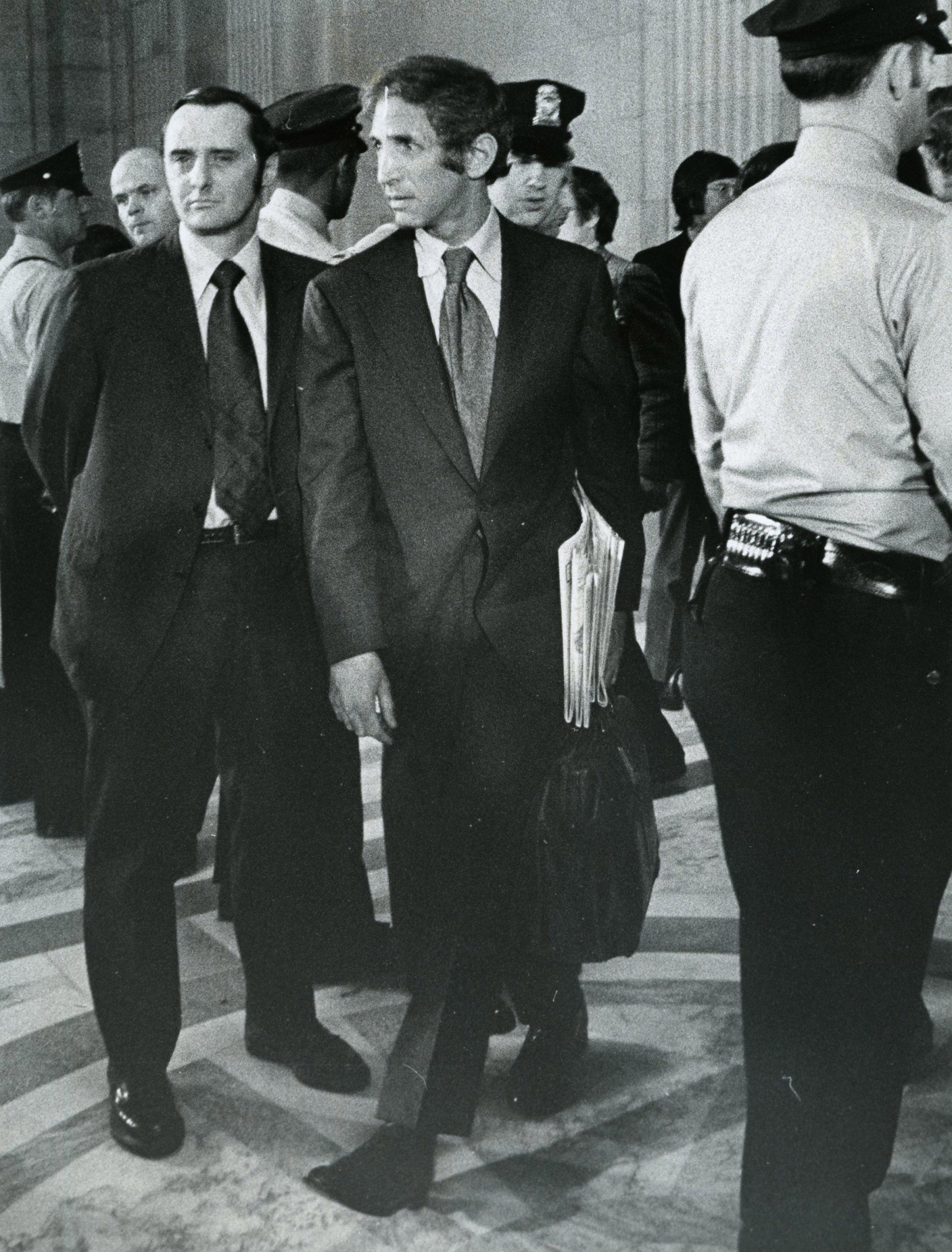
As director of the CIA and former head of Central Command, General David Petraeus was caught sharing information on some of America’s most sensitive secrets with his biographer and lover, Paula Broadwell. While the FBI recommended felony charges, he eventually pled guilty to a single misdemeanor, before becoming head of a think tank at a private equity firm. Sandy Berger, President Bill Clinton’s former national security advisor, was caught stealing classified documents from the National Archives with the intent to hide potentially embarrassing details from the 9/11 Commission. His guilty plea (also to a misdemeanor) did not appear to have damaged business for Stonebridge International, the consulting company he co-founded after leaving office.
At the same time, Matthew Connelly and his team at the History Lab, a research center that maintains and analyzes a vast database of declassified government records, found that many of the most-redacted portions of certain documents — the secrets that federal agencies tried to keep the longest — were those that recorded embarrassing, incompetent, or illegal activity. The State Department hid that Winston Churchill believed that Franklin Roosevelt had conspired to allow Pearl Harbor to happen. The FBI had illegally wiretapped American civil rights activists, and its anonymous letter blackmailing Martin Luther King, Jr. and goading him to commit suicide was heavily redacted for decades; a complete version was discovered only in 2014. And the CIA has continued to fight the full declassification of records relating to the assassination of President John F. Kennedy as required by a special 1992 act of Congress. The CIA’s motivations appear to be not any legitimate security interest but the inevitable embarrassment and loss of trust that will follow further confirmation that the agency’s dealings with Lee Harvey Oswald were much more extensive than it admitted at the time.
Senator Moynihan would not have been surprised by all this malfeasance. How could it have been otherwise? The American system of republican government was expressly designed to contain and channel all-too-human ambitions, hubris, and foibles. “Ambition must be made to counteract ambition,” James Madison wrote in Federalist 51. And yet, the system of bureaucratic secrecy allows initiates to hide their errors, punish their enemies, disguise their motives, and avoid public scrutiny. Moynihan felt that, if American democracy was to survive, the expansive culture of secrecy had to be resisted: “It is time also to assert certain American fundamentals, foremost of which is the right to know what government is doing, and the corresponding ability to judge its performance.”
But fate was not to smile upon Moynihan’s call. As massive as the backlog of classified material was when the Secrecy Commission did its work in the 1990s, now that the Cold War was over and there was already a steady stream of unofficial leaks anyway, it was still possible to imagine a new era of open government. But Moynihan — who would die a few years later, six days into the American invasion of Iraq in 2003 — could not have imagined then the scale that secret government activity would reach during the Global War on Terrorism.
The purpose of government secrecy is to conceal information that would be damaging if it were publicly revealed: damaging not only to the national interest (the official purpose) but also to the bureaucratic interests of various organs of the government, to the private interests of its members, or to the political interests of the White House. But this system rarely ensures that secrets are never revealed. Government programs of almost any size leave a paper trail.
As Moynihan realized, this means that public knowledge of government wrongdoing cannot be eliminated by secrecy, it can only be delayed. The impact of some damaging event is publicly felt not when it occurs but when it is revealed. Ultimately, the secrecy system succeeds only in pushing this cost to some future date, making it someone else’s problem. Government secrets are thus a form of informational debt, of delaying the payment of political costs. The Cold War and the War on Terror created a massive such debt of secrecy, scandal, paranoia, and cynicism that is only now being repaid.
And yet, as with the national debt, the federal government has become addicted. The “vast secrecy system,” Moynihan lamented, “has become our characteristic mode of governance in the executive branch.” It balances its budget of political costs by siphoning them into the secrecy system, in much the same way that the energy giant Enron used off–balance sheet entities in the 1990s to soak up debt from the books and make the company seem more profitable than it was.
The informational debt of government secrecy has grown to such proportions that weird things are happening elsewhere in the informational system. The dark planet of secrecy is subtly pulling everything into its orbit — electoral politics, mainstream media, conspiracy theorists, even Hollywood entertainment. And stranger things yet will occur as secrets burst into the open in unexpected ways and at unexpected times.
In the Apocalypse of St. John, at the end of the world, the Lamb of God opens a sealed scroll: apokalupsis in Greek means an unveiling or disclosure. Media theorist James Poulos once pointed out to me that the causality between the unveiling and the end of the world goes in both directions. As the Apostle Paul says, the end of the world “will bring to light the hidden things of darkness, and will make manifest the counsels of the hearts.” At the same time, the revelation of secrets, especially those that lay bare the inner workings of power, generates a feeling of apocalypse. When a grave secret that upends everything you thought to be true is revealed, it can feel like the end of the world.
The national security state leaves a mighty, veiled signifier in the public sphere, unto which people may project their darkest fantasies. The state’s revealed secrets and the possibility of its hidden involvement are easily folded into any conspiracy narrative, in proportion to the public’s consciousness of the secrets. Like a Lovecraftian monster, the only thing worse than it lying hidden is it standing in all its eldritch glory, driving people insane at its mere appearance.
Digital communications have made it possible to collect mountains of secret knowledge. But they have also facilitated the mass revelation of secrets. Since 9/11, this pattern of accumulation and leaking has occurred with increasing frequency, to include the WikiLeaks cables, Edward Snowden’s revelations, the Panama Papers, DNC emails, IRS tax filings of the superwealthy, and more. These leaks destroy public trust, both in themselves and in what they show. But they also provide the raw material for building and, in a sense, “proving” conspiracy theories.
One substantial reason why many Americans believe in conspiracy theories is that the government conducts secret activities at massive scale at home and abroad and, indeed, because members of the government have verifiably lied to American citizens about those activities, both for ostensible national security reasons and to save political face. The growth of the national security state has led the normal functions of government to take on the form of a conspiracy. Consider the following demonstrably true recent fact patterns and ask yourself why any American would not find conspiracy theories plausible:
Analyses of conspiracy theories often miss the most remarkable fact about them: that a great many emerge adjacent to corresponding real intelligence activities or propaganda efforts. A small sample includes the Protocols of the Elders of Zion, a conspiratorial antisemitic document forged by the Tsarist secret police; UFOs, many sightings of which in the 1950s and ‘60s were later admitted to have been of secret U-2 airplanes and covered up by the Air Force; the JFK assassination, during the investigation of which the CIA repeatedly and publicly lied to cover up its covert activities in Latin America; rumors about the CIA inventing AIDS, which were KGB propaganda; paranoia about black helicopters, which in fact are used in American special operations urban exercises; Pizzagate and QAnon, which relied on hacks of Democratic leadership emails apparently by Russian intelligence; the Steele dossier and Russiagate, both of which involved activities of numerous intelligence operatives; and more.
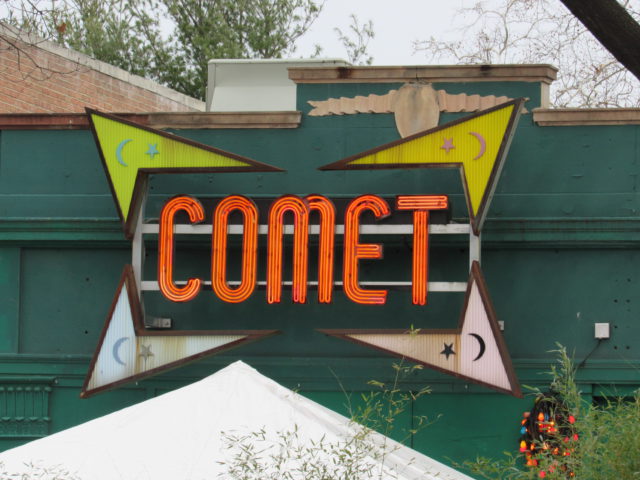
This is not to suggest that the conspiracy theories are correct. Rather, as the world of secrets expands, the number of intersections (accidental and intended) that the secret world has with the world of facts grows. And these intersections, often badly understood and interpreted by outsiders, form the seeds of further conspiracy theories. Consider again the case of the CIA lying to the Warren Commission about its relationship to Lee Harvey Oswald. It did so, we can reasonably argue, not because of guilt but because of embarrassment. Oswald had been involved in fringe Left activities, lived in the Soviet Union, and engaged with Cuban revolutionaries. In the context of the Cold War, it would have been shocking if he had not had contact with the CIA. Similarly, the FBI and CIA knew a lot about the 9/11 attackers very quickly, because some of the attackers had come across the radars of U.S. agents or informants in prior years and because they were funded by Saudi and Pakistani networks the CIA was investigating. If you have an intelligence agency with a global reach, and it is involved in monitoring shadowy groups behind all kinds of sinister activity, it does not make it a puppet master. It means it is doing its job.
But this secret activity does come at an epistemic cost. Societies with lots of conspiracies and secrecy generate cynicism and a distrust of the “official narrative.” Just as it has done to the world of facts, the rise of digital computing has turbocharged this by greatly expanding individual access to secrets. Anyone can fire up Wikileaks and spend hours trawling through tantalizingly secret leaked documents that can then be fitted into one’s preferred narratives.
Poring over databases of leaked documents, FOIA releases, or investigative reports is a shared activity for online political narrative-building of all kinds. Scouring through original documents, working collectively to “find clues” and decipher meanings, and gaining clout from esoteric discoveries provides a game-like character to modern conspiracy theories, something that is only possible because of the sheer mass of formerly hidden information available online. It was the leak of Clinton campaign chief John Podesta’s emails, allegedly by the Russian foreign intelligence agency, that allowed online communities like 4chan to come together and develop the Pizzagate conspiracy theory, the seed around which the QAnon movement grew.
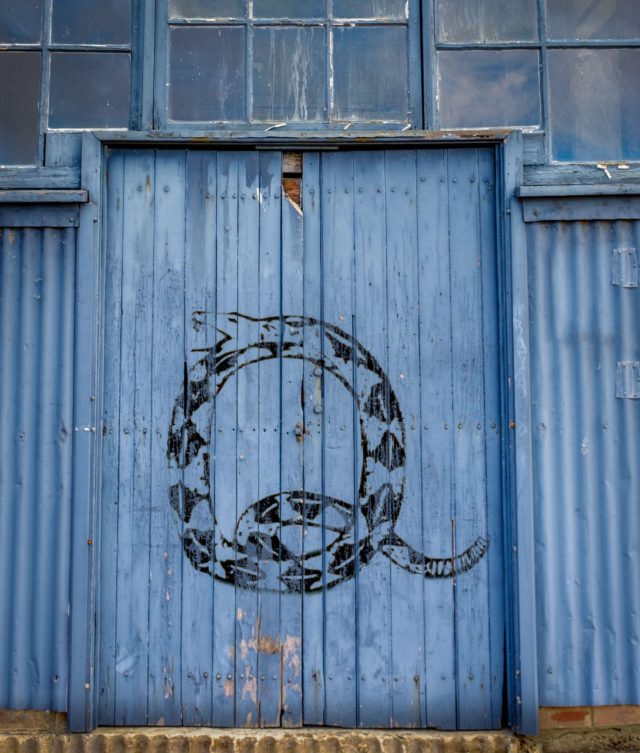
This relationship between government secrecy, leaked or released documents, and public revelations of government malfeasance has proven to be a powerful acid of institutional trust. Over the past thirty years, there have repeatedly been “conspiracy theories” about opaque government activities at the margins of the sprawling national security complex, subject to vehement denunciations and official denials, that were later verified to be essentially true by documents leaked or released by the bureaucracies themselves. Most recently, Jacob Siegel has documented how the attempt to defend American discourse against disinformation and conspiracy theories was itself the product of unprecedented coordination between shadowy NGOs, social media companies, and high-level intelligence officials. Senator Moynihan was right that, at an epistemological and psychological level, democracy and secrecy are incompatible principles.
The psychic weight of secrecy in American life has grown heavier because of increasingly overt interventions by the hidden world into media and culture. The threat of post–Cold War budget cuts convinced the CIA that it needed to market itself to the American people. The first movie officially made with CIA cooperation, In the Company of Spies, debuted in 1999. In March 2001, CBS green-lit a drama called The Agency, made with unprecedented access to the CIA campus. The pilot episode, which was due to premiere at Langley on September 18, 2001, revolved around the race to foil a major Al Qaeda plot against the West. The show ran for two seasons, with the premiere pushed off to a later date. The War on Terror saw an explosion of content made with the approval of the national security state. A 2017 piece in the Independent found that “on television … over 1,100 titles received Pentagon backing — 900 of them since 2005.”
The apotheosis of this marriage between Hollywood and the national security state was Zero Dark Thirty, released the year after the killing of Osama bin Laden. The Obama administration and the CIA’s aid to director Kathryn Bigelow was the subject of congressional investigations over the remarkable level of access to intelligence her team received. Journalist Naomi Wolf described it as “a gorgeously-shot, two-hour ad for keeping intelligence agents who committed crimes against Guantánamo prisoners out of jail.” Whatever one makes of the movie’s accuracy or fairness, it was produced in part out of a “perception management” operation by the White House and the CIA.
As sci-fi novelist Charles Stross predicted in his 2007 thriller Halting State, the intersection of entertainment and intelligence operations would render it impossible to distinguish between authentic and inauthentic cultural expression: in fact, it would obliterate the idea of a distinction. The revelations of clandestine activity that are crashing like waves with increasing frequency against our social psyche both illustrate and worsen this problem.
Ever since the CIA’s secret sponsorship of 1950s and ‘60s modernism in high art and literature first came to light in the late 1980s, Americans have been alive to the possibility that new movements, ideas, and aesthetics might be an “op.” The combination of leaks and delayed releases will only continue to pile up evidence of clandestine government interventions in all aspects of culture, art, entertainment, and advocacy in ways that undermine the notion of an independent civil society. As intelligence agencies from around the world accelerate their involvement in shaping the “global information environment,” especially in the American center of worldwide cultural production, it becomes increasingly naïve to deny the possibility. Participants in online message boards, especially around fringe topics, already joke about “fed-posting” and infiltration of their conversations. They’re not always really joking.
In Halting State, intelligence agencies make use of alternate reality games and online roleplaying games for their own purposes, including recruiting unwitting members of the public to spread information and carry out espionage activities under the guise of the game. The real cryptographic puzzle game Cicada 3301 seems as if it is linked to the hidden world. The co-founder and CEO of 42 Entertainment, the top production company for alternate reality games, began her engineering career in Lockheed Martin’s classified Skunk Works program. And whatever the real scale of actual intelligence activities, even the perception that feds and intelligence sockpuppets could be present heightens the stakes (and the romance) of any online political movement. Mysterious forces from the hidden world of intelligence are at battle, and anyone can join the #Resistance or help #StoptheSteal.
The impossibility of distinguishing “real” and manipulated online activity is only going to worsen. Earlier this year, to support his arguments about the war in Ukraine and to gain clout with his online friends, Airman First Class Jack Teixeira of the Massachusetts Air National Guard leaked dozens of top secret documents to a small chat server — exactly the kind of event predicted in another essay in this series, “Reality Is Just a Game Now” (Spring 2022). In the wake of this discovery, broadly described as the worst U.S. intelligence breach in a decade, conversation has turned to the need for federal counterintelligence officials to monitor and trawl online forums even more seriously than they already do. As Internet users pour ever larger amounts of attention, activity, and loyalty into online communities, we can expect the hidden world of intelligence to follow close behind.
However hard they push back against the influence of conspiracy theories on American politics, no amount of effort by mainstream media, the Department of Homeland Security, and the growing crop of misinformation NGOs that are popping up like mushrooms on the damp log of foundation interest will be enough. For those policy wonks concerned about the demise of trust in American institutions, actually becoming honest and trustworthy does not seem to have entered into the picture. Only the fulfillment of reforms to the government secrecy system that serious critics from both political parties have demanded for fifty years, and a true recommitment to openness, can restore Americans’ faith in their institutions. ♠
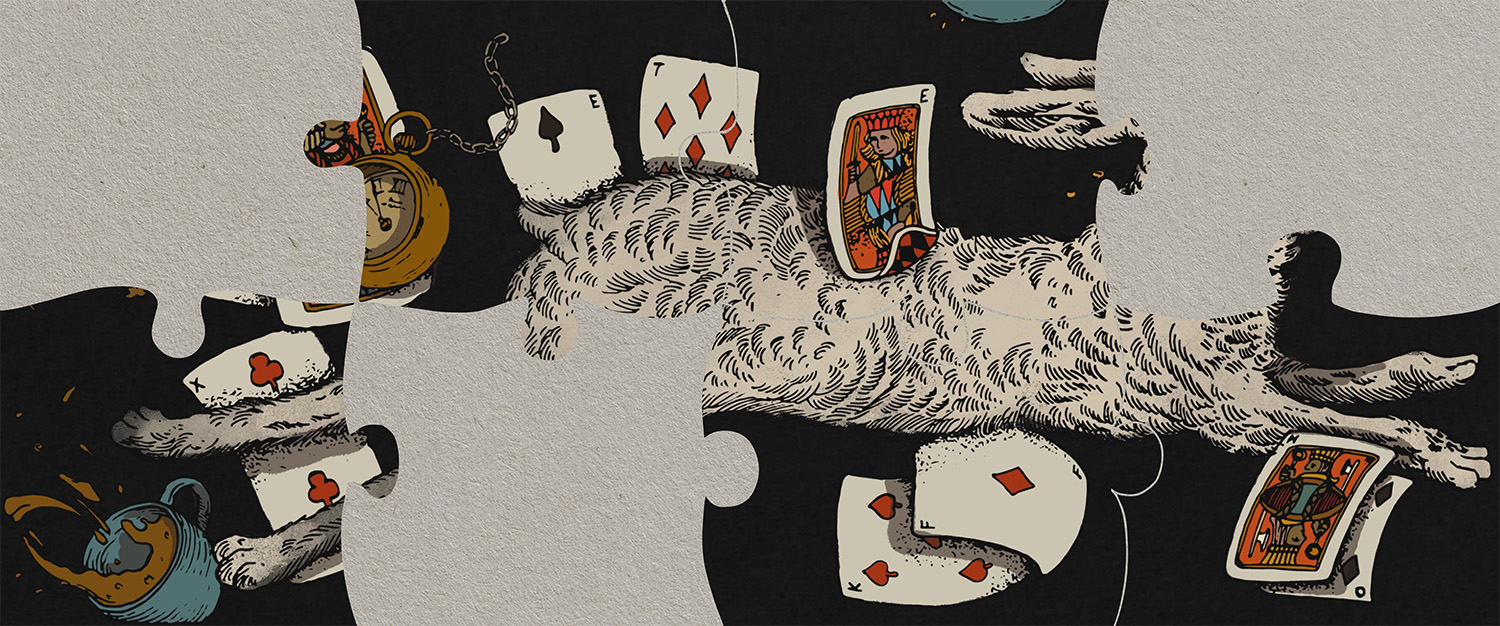
← Essay 4. What Was the Fact?
Essay 6. The New Control Society →
Exhausted by science and tech debates that go nowhere?